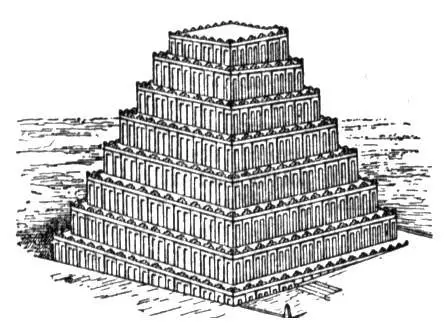The Ziggurat
What is a ziggurat?
- A Ziggurat was a place of worship built on many levels with steps all around it. Ziggurats were usually located at the very centre of Mesopotamian cities and, after 2000 BC, they could be found in most of those cities.
- They were remarkable structures usually made of millions of sun-dried mud bricks. As the bricks had been dried under the sun, the idea was that the ziggurat was protected from strong winds and heavy rain.
- Although they look very solid, in truth Ziggurats were not as durable as they might have been. Some of them had to be rebuilt every 100 years. In reality years of heavy rain, meant that water softened the mud bricks. After many years, the top section of the ziggurats sometimes caused the lower section to slowly give way as the bricks were not hard enough.
- Ziggurats were designed to drain water and even had internal drainpipes to get rid of the water. Many ziggurats had layers of reeds, grass-like plants, and bitumen, a black, waterproof tar, between the mud bricks on each level to help protect from water damage.


What did they look like?
- Not all ziggurats were the same. The Sumerian and Babylonian ziggurats had no other buildings around them, but Assyrian ziggurats made their ziggurats part of a bigger structure that included other buildings.
- The ziggurats were often very tall structures. Clay tablets, which were the books of the time, describe temples with as many as seven levels. In a similar manner to other religious buildings, the idea was to create a connection between heaven and earth so height was considered to be very important. Not all ziggurats were so tall though, with many only four or five levels high.
- The ziggurats were often very tall structures. Clay tablets, which were the books of the time, describe temples with as many as seven levels. In a similar manner to other religious buildings, the idea was to create a connection between heaven and earth so height was considered to be very important. Not all ziggurats were so tall though, with many only four or five levels high.
- There was another reason why the Ziggurats were built as tall structures. They were looked upon as mountains that had been recreated by human hands. People believed that the gods actually lived in the mountains in the eastern part of Mesopotamia. So the ziggurats can also be seen as a way of recreating the gods’ mountain home.
- Although they were not all the same, a typical ziggurat had three staircases from the ground up to the lower level. All of the staircases were usually located at the front of the building. There were usually two staircases that led to the first level from either side. A third staircase was located at the centre and ran to the very top of the structure. There was a temple at the top to worship the city’s god, but there was also a lower temple for other gods at the foot of the ziggurat.
- The stairs around the ziggurat allowed priests and other religious leaders to walk up the building to the very top where they could perform rituals on the high temple. During these religious rituals, ordinary people would be located at the bottom of the building listening to and participating in the hymns and prayers. In certain cases, the ziggurats even had special areas where marriages took place.

Who built them?
- The ziggurats are often associated with the Sumerians who were the first people to build them. However, other peoples, including the Assyrians and the Babylonians, also built ziggurats.
- Each city had its own special god who was seen as the protector of that particular place. Each ziggurat was seen as the home of a given god. Sometimes smaller ziggurats were built

The legacy and influence of ziggurats
- Most of the original ziggurats no longer exist. The most important and largest surviving ziggurat is located at ChoghaZambil in Elam. This ziggurat dates back to around 1200 BC and is about half of its original height.
- There have been efforts to restore ziggurats, such as the Great Ziggurat of Ur. Its front was entirely reconstructed. Other sites are still the subject of archaeological interest as people seek to find out more about ancient Mesopotamia.
- Interestingly, the ziggurats of Mesopotamia and the pyramids that we find in ancient Egypt were built with no influence one way or the other.
- An even more curious fact is the development of similar stepped pyramids by Mayans and Aztecs much later and in a completely different part of the world.



